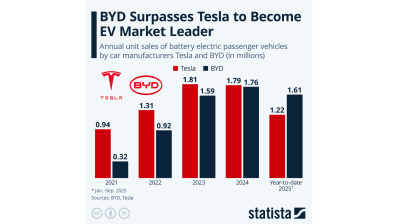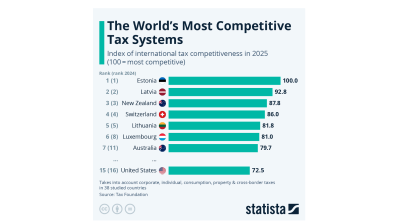The Czech economy delivered an unexpected acceleration in the third quarter, marking a clear shift from its earlier position as a regional underperformer to one of Central and Eastern Europe’s fastest-growing economies.
Gross domestic product rose by 0.7% quarter on quarter, according to official figures published this week—stronger than both market expectations of 0.3% and Capital Economics’ forecast of 0.5%. On an annual basis, growth reached 2.7%, the fastest pace in three years. Forward-looking survey data also point to continued momentum at the start of the fourth quarter.
“The pickup in growth means that Czechia has moved to become one of the fastest growing economies in Central and Eastern Europe over the past year, having previously been a laggard,” Liam Peach and Nicholas Farr, emerging Europe economists with Capital Economics said in a note on October 30.
While a detailed breakdown of the GDP data is not yet available, the Czech statistics office noted that the expansion was mainly driven by household consumption and gross capital formation, both of which signal rising domestic demand. Analysts attribute the shift to lower interest rates and strong wage growth, which have combined to boost spending and investment.
“If we’re right that growth in the euro-zone will pick up modestly over the coming year, that should provide some boost to export demand and GDP growth ahead,” Capital Economics said.
Despite political signals suggesting the incoming government will avoid significant changes to the 2026 budget in the short term, expectations for more pro-growth fiscal measures are building. “We suspect fiscal policy will become more supportive of growth going forward too,” the firm added.
Against this backdrop, Capital Economics said the risks to its current GDP forecasts—2.5% growth in 2025 and 2.8% in 2026—are now “skewed to the upside.”
The improving growth picture is also influencing expectations for monetary policy. With headline inflation having cooled, the Czech National Bank has been able to shift to a holding pattern. “The strength in the economy also supports our view that the Czech easing cycle is over; we expect hawkish guidance from policymakers when they leave their policy rate on hold at 3.50% next week,” Capital Economics said.
Data

Eurobonds of Istanbul-listed Zorlu units offer attractive yields amid rating downgrades and no default expectation
Debut paper currently offering 14-15% yield.

Ruble strengthens as sanctioned oil companies repatriate cash
The Russian ruble strengthened after the Trump administration imposed oil sanctions on Russia’s leading oil companies, extending a rally that began after the Biden administration imposed oil sanctions on Russia in January.

Russia's central bank cuts rates by 50bp to 16.5%
The Central Bank of Russia (CBR) cut rates by 50bp on October 24 to 16.5% in an effort to boost flagging growth despite fears of a revival of inflationary pressure due to an upcoming two percentage point hike in the planned VAT rates.

Ukraine's trade deficit doubles to $42bn putting new pressure on an already strained economy
Ukraine’s trade deficit has doubled to $42bn as exports fall and imports balloon. The balance of payments deficit is starting to turn into a serious problem that could undermine the country’s macroeconomic stability.




